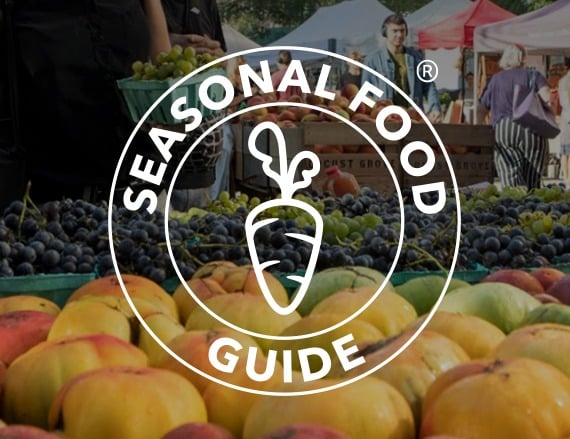Real Food Encyclopedia | Cardoon
If you ever see what looks like a bunch of thick-stalked, dusty-green celery at the market, buy it! Chances are you have stumbled upon the elusive cardoon (Cynara cardunculus), which can be quite difficult to find. Native to the Mediterranean region, cardoons were enjoyed by the ancient Greeks and Romans and are still widely grown in Southern Europe and North Africa — but have been a rather minor vegetable in the U.S. in recent centuries.
Cardoons are botanically thistles, and the celery resemblance is superficial; their closest relatives are artichokes, and they have a mild artichoke-like flavor, though unlike artichokes they are grown for their thick stems rather than their flower buds. The cardoon plant itself is huge and striking, with silvery foliage and a spiky purple flower.
Fun facts about cardoons:
- In Spain and Portugal, cardoons have traditionally played a role in the production of so-called thistle cheeses. They contain cardosin and other enzymes that can be used as a form of vegetable-derived rennet.
- Long a popular vegetable in Italy, cardoons show up in Caravaggio’s “Still Life with Flowers and Fruit” (painted in 1601).
- The plant is considered an invasive weed in parts of the United States, South America and Australia.
What to look for when buying cardoons
It’s pretty unlikely that you’ll find cardoons at your local supermarket, so scour specialty grocers and farmers’ markets near you. Cardoons are sold in large bunches; stalks should be firm with no spongy or blackened spots. Stalks are often covered with tiny spines, so be careful — or look for one of the spineless cultivars that have been bred specifically to avoid the discomfort.
Sustainability of cardoons
Cardoons are such a niche vegetable in the U.S. that their environmental impact is likely negligible. Look for organic cardoons if you can find them, though the esoteric nature of the vegetable may limit your ability to purchase them organically.
The cardoon plant must be blanched to be edible — in the garden, “blanching” means that parts of the plant are mounded with soil or otherwise covered to inhibit chlorophyll production, making the plant more tender and often less bitter. Today, cardoons are generally blanched by surrounding the stalks with floating row cover, often made of plastic, but this can also be done with hay, soil or newspaper.
Seasonality
For most in this country, cardoons are a cool-weather vegetable, showing up in the market in mid- to late fall. If you live in California, you might be lucky enough to find cardoons in the spring.
Eating cardoons
Storing
This high-maintenance vegetable does not store well. If you can, plan to use your cardoons no more than a day or two after you’ve purchased them. Wrap them in damp paper towels, stick them in a zip-top bag and place in your crisper to keep them fresh; the last thing you want is a floppy cardoon.
Cooking
Prepping cardoons can be difficult thanks to the small, sharp spines you’ll often find on the stalks. Some cooks will advise you to wear gloves when working with them.
Though you’ll sometimes see this on the other side of the Atlantic, the cardoons we get in the U.S. tend to be far too bitter to eat raw. Instead, they must first be peeled — a paring knife or vegetable peeler works best — and then boiled for at least 20 minutes to tenderize them and reduce any bitterness. (Some recipes will also call for them to soak in a vinegar solution before boiling.) Only then are they truly ready to work with: You can fry, roast, braise or bake them to your heart’s content.
Much like their artichoke cousins, cardoons pair well with citrus, dairy and meats like beef and chicken. Cardoons are common in Italy, where they turn up in risottos, pastas and soups. They are also popular in North African cuisines, especially Moroccan, where they are a great addition to tagines.
Nutrition
A moderate source of fiber, cardoons also contain good amounts of minerals like folate, magnesium, potassium, copper and manganese.
Top photo by MaBu/Adobe Stock.

